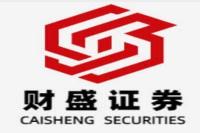AI芯片崛起:ASIC挑战GPU霸权,谁能笑到最后?
元描述: AI芯片, ASIC, GPU, 英伟达, 博通, 苹果, 人工智能, 数据中心, 定制芯片, 深度学习, 推理计算, 训练计算, 云计算
准备好迎接人工智能芯片领域的革命性变革吧!在这个瞬息万变的技术世界中,英伟达的GPU长期以来一直主导着AI计算领域,但风云变幻,一股强大的力量——ASIC定制芯片——正蓄势待发,挑战着GPU的霸主地位。本文将深入探讨这场芯片之战,揭秘ASIC的崛起之路,剖析其与GPU的优劣势,并展望未来AI芯片市场的格局。我们将从技术细节、市场趋势、企业策略等多个维度,为您呈现一个全面、深入、独到的AI芯片江湖全景图。准备好?系好安全带,让我们一起开启这段精彩的旅程!
ASIC芯片:挑战GPU霸主的后起之秀
Forget the "Nvidia vs. oranges" analogy – this is a heavyweight championship bout! For years, Nvidia's GPUs have reigned supreme in the AI arena. They're the undisputed champs, boasting impressive parallel processing capabilities perfect for training massive AI models. Think of them as the all-around athletes, capable of handling various tasks. But a new contender has entered the ring: ASICs (Application-Specific Integrated Circuits). These specialized chips are designed for one thing, and they do it exceptionally well – often outperforming GPUs in specific AI tasks like inference. They're the weightlifters, specializing in one area and dominating it with unparalleled efficiency. This isn't about replacing GPUs entirely; it's about a shift in the landscape, a diversification of solutions tailored to specific needs.
Think of it like this: you wouldn't use a Swiss Army knife to perform brain surgery, right? Similarly, while GPUs are versatile, ASICs offer superior performance and efficiency for specific AI applications. The key here is specialization.
ASIC vs. GPU: A Detailed Comparison
Let's break down the key differences between these two titans:
| Feature | GPU | ASIC |
|----------------|------------------------------------|----------------------------------------|
| Purpose | General-purpose computing, AI training & inference | Specific AI tasks (training or inference) |
| Flexibility | High | Low |
| Performance | Excellent for training, good for inference | Superior for specific tasks, often higher efficiency |
| Power Efficiency | Moderate | Generally higher |
| Cost | Relatively high | Can be lower, depending on volume |
| Development Time | Shorter | Longer |
It's a bit like choosing between a luxury SUV and a high-performance sports car. The SUV is versatile, but the sports car excels in its niche.
巨头们的ASIC布局:一场没有硝烟的战争
The major tech players are already making significant investments in ASICs. This isn't just a trend; it's a strategic imperative.
-
Broadcom (AVGO): This chip giant is making waves with its custom ASICs, securing contracts with major players like Apple, demonstrating the huge demand for specialized solutions. Their recent financial reports showcase a staggering 220% year-over-year growth in AI revenue – a clear indicator of this market's explosive potential. They're not just building chips; they're building an ecosystem.
-
Marvell: Riding high on the success of its custom AI chips sold to Amazon and other data center giants, Marvell's CEO Matt Murphy has highlighted the huge contribution of these chips to their impressive Q3 results. This indicates a powerful shift towards tailored solutions within the data center space.
-
Apple (AAPL): Rumored to be collaborating with Broadcom on a custom ASIC for its future products (potentially launching in 2026), Apple’s move underscores the growing importance of specialized hardware in the AI landscape. This isn’t just about hardware; it’s about controlling their AI destiny.
-
Google (GOOGL): Google's Trillium TPU, the backbone of its Gemini 2.0 model, is a testament to the power of ASICs. The announcement of its general availability signifies a major leap forward in both training and inference capabilities. This is a clear indication of where Google sees the future of AI hardware.
-
Amazon (AMZN): Amazon's AWS is not to be left out. Their Trainium2 chips power their EC2 Trn2 instances, boasting a 30-40% cost advantage over GPU-based alternatives. This shows a strong commitment to optimizing their cloud services with optimized hardware.
These companies aren't just developing ASICs; they're building complete ecosystems around them, including software and support, creating a compelling alternative to the GPU-centric approach.
推理计算的崛起:ASIC的黄金时代
A crucial factor fueling the rise of ASICs is the increasing dominance of inference computing in the AI landscape. Inference, the process of using a trained AI model to make predictions, is far more prevalent than training. Reports from Barclays suggest that inference could account for over 70% of total AI computing needs, surpassing training needs by a factor of 4.5! This massive demand for inference provides fertile ground for ASICs, which are ideally suited for this task. Nvidia currently holds a significant market share in inference (around 80%), but analysts predict this could fall to around 50% by 2028 as custom ASICs gain traction.
This shift towards inference-centric workloads is a game-changer, and ASICs are positioned to capitalize on it.
ASIC产业链:投资机会的涌现
The growing demand for ASICs isn't just good news for the big tech companies; it's also creating significant opportunities for companies across the ASIC supply chain. Numerous firms are involved in the design, manufacturing, and supporting technologies required for these specialized chips. Analysts are bullish on this sector, projecting significant growth and improved ROI for cloud providers. Investing in the ASIC supply chain might yield substantial returns in the coming years.
常见问题解答 (FAQ)
Here are some frequently asked questions about ASICs and their role in the AI revolution:
-
Q: What are the main advantages of ASICs over GPUs for AI?
A: ASICs offer superior performance and power efficiency for specific AI tasks, particularly inference, due to their specialized design. While GPUs are more versatile, ASICs often outperform them in their niche.
-
Q: Are ASICs replacing GPUs entirely?
A: No. GPUs remain crucial for AI model training and other general-purpose tasks. ASICs are complementary, offering a specialized solution for specific inference workloads.
-
Q: What are the challenges in developing and deploying ASICs?
A: ASIC development is more time-consuming and expensive upfront compared to using existing GPUs. The specialized nature means they're less flexible and adaptable to different tasks.
-
Q: Which companies are leading the ASIC development?
A: Broadcom, Marvell, Google, and Apple are among the key players actively developing and deploying ASICs for AI applications.
-
Q: How does the cost of ASICs compare to GPUs?
A: The cost per unit of computation (TFLOPS/$) can be significantly lower for ASICs, especially in high-volume production, making them an attractive option for cloud providers and large-scale deployments.
-
Q: What are the future prospects for ASICs in the AI landscape?
A: The future looks bright for ASICs. The increasing importance of inference, coupled with ongoing improvements in design and manufacturing, points towards a significant expansion of their role in the AI world.
结论:迎接AI芯片新时代
The rise of ASICs marks a pivotal moment in the AI chip landscape. It's not a simple case of one technology replacing another; it's a shift towards a more diverse and specialized approach, where GPUs and ASICs will coexist, each playing a crucial role. The explosive growth in AI applications, especially in inference, will drive the demand for ASICs, creating substantial opportunities for both established tech giants and emerging players in the supply chain. The next few years will be pivotal in shaping the future of AI hardware, so buckle up and get ready for the ride!



